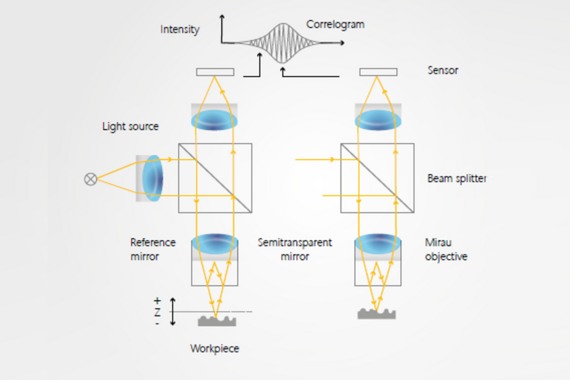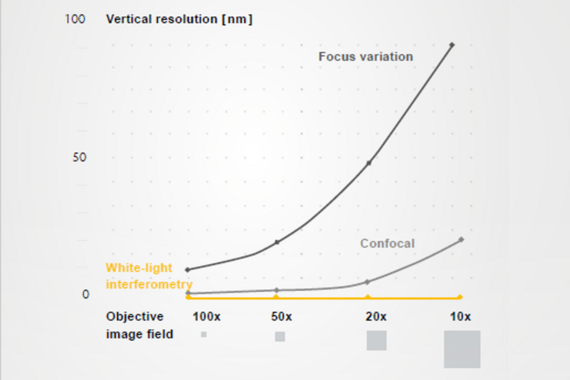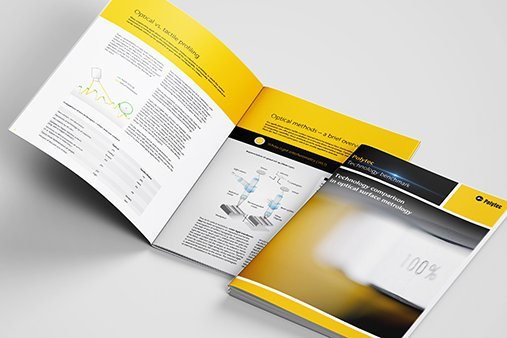
White-light interferometry as areal, optical 3D measurement technology
Modern white-light interferometers use the interference effects that occur when the light reflected from the sample is superimposed with the light reflected by a high-precision reference mirror. The measurement method is based on the principle of Michelson interferometry, where the optical configuration (image) contains a light source with a coherence length in the μm range. The collimated light beam is split into a measurement beam and a reference beam at a beam splitter. The measurement beam strikes the sample, the reference beam strikes a mirror. Light reflected from the mirror and the sample is recombined at the beam splitter and focused onto a camera.
Video of basic principles of white-light interferometry (coherence scanning interferometry)
Whenever the optical path for an object point in the measuring arm and the optical path in the reference arm are the same, constructive interference takes place for all wavelengths in the light source’s spectrum and the camera pixel of the object point in question has maximum intensity. For object points with a different optical path, the assigned camera pixel has a low intensity. Consequently, the camera registers all the image points at the same height.
Large area systems with a telecentric configuration allow you to simultaneously and quickly measure the topography of large surfaces in a single measurement. On the other hand optical profilers based on microscope systems, where the optical configuration including the reference arm is integrated into the lens, are more suitable if you require more lateral details on the whole area.

Vertical resolution independent from field-of-view
With the areal measurement method of white-light interferometry (coherence scanning interferometry), the vertical resolution does not depend on the selected objective. Whitelight-interferometry is the only measurement method where the resolution is independent of the field-of-view.

Technology guide: compare pros & cons of optical surface metrology approaches
Find out more about the strengths and limitations of these four common surface measurement methods in the technology comparison, regarding vertical and lateral resolution, application sweet spots on smooth surfaces or roughness measurement, with or w/o stitching
- White-light interferometry
- Confocal microscopy
- Focus variation
- Chromatic confocal sensors
Polytec Magazine
"Optical surface metrology complements tactile measurement techniques"
Prof. Dr. Albert Weckenmann about optical and tactile surface measurement
Have a closer look on precision surfaces
Overview of optical methods for surface metrology
